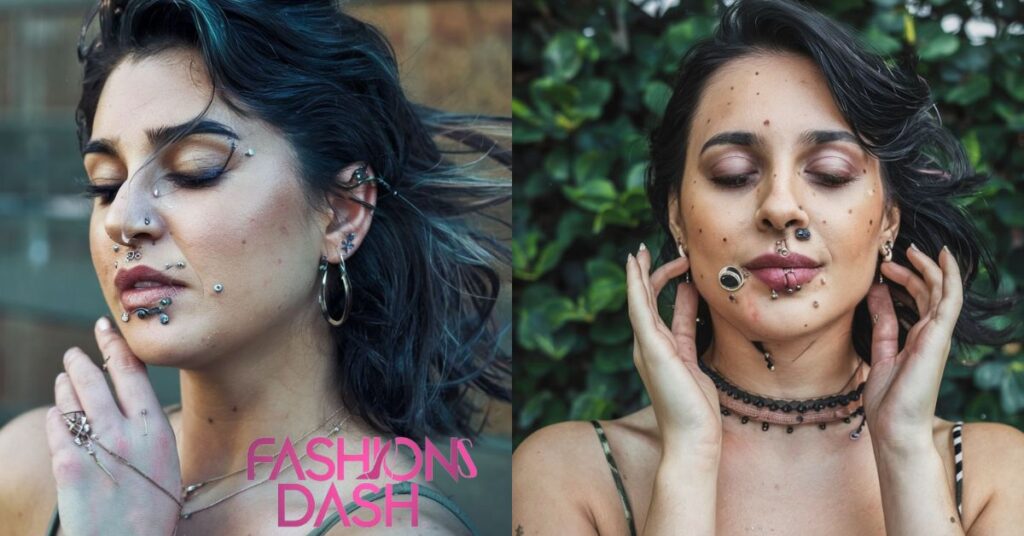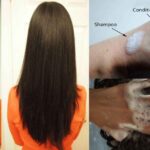Body piercing is when you make a small hole in your body to put in jewelry.
It’s a way for people to decorate their bodies and express themselves. Body piercing offers a unique way to express yourself and enhance your look. Whether you’re intrigued by ear studs, fascinated by facial piercings, or curious about more intimate options, exploring the world of body piercing can be an exciting journey of.
So, while it might seem like getting something as small as a little piercing should be simple, there’s actually a lot to think about. After all, you want to stay healthy and safe and have a successful piercing experience that allows you to enjoy your new body art for years to come. To help us cover all the must-know information about body piercings.
The History of Body Piercing
Body piercing has been around for thousands of years and has been practiced in many cultures around the world. It has been used for cultural and religious purposes.
As well as for personal adornment and self-expression. In ancient times, body piercing was often a symbol of status, wealth, or spirituality, and different cultures had their own traditions and meanings associated with it.
Modern Body Art and Contemporary Design
In today’s world, body piercing has become a way for humans to express their individuality and creativity. With the evolution of modern body art and design, people can adorn themselves with a variety of piercings and jewelry options, transforming their bodies into unique canvases of self-expression.
From the subtle elegance of ear studs to the daring allure of facial piercings, each piercing tells a story and reflects the personality of the individual. Through body piercing, humans can embrace their differences and celebrate their uniqueness, creating a visual representation of who they are and what they stand for.
Contemporary body piercing design has revolutionized the way humans interact with their bodies. With an array of innovative jewelry styles and materials, individuals can customize their piercings to suit their preferences and lifestyles. Modern body art allows humans to explore their creativity and push the boundaries of traditional beauty.
Types of body piercings (full list)
There are many types of body piercings, from the popular earlobe piercings to the lesser-known corset piercings. Let’s learn all about the different body piercing types.
· Ear Piercing
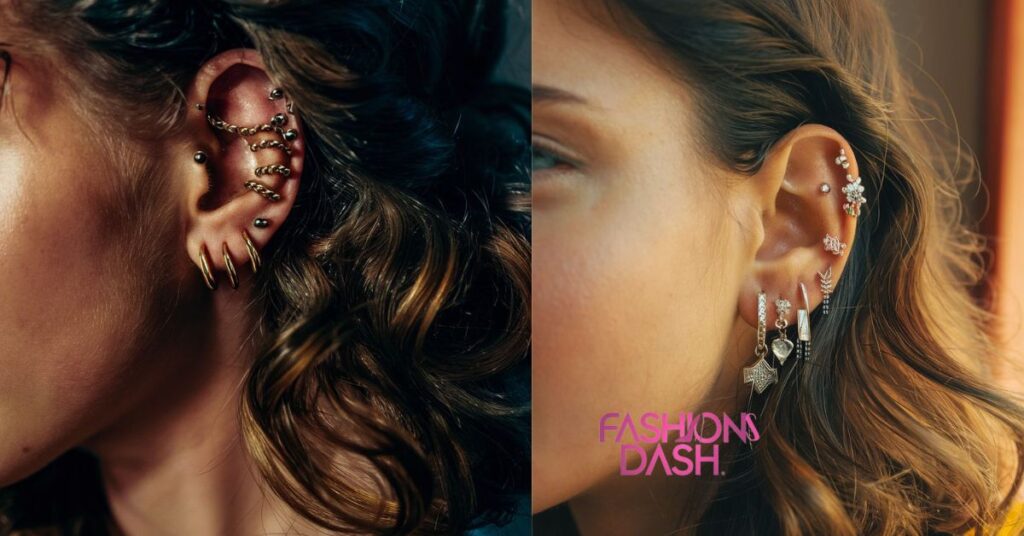
The number of piercings you can get on your ear depends on various factors, including the size of your ear, the placement of your piercings, and your personal preferences. Here’s a general guide to the number of piercings you can get on different parts of your ear:
Earlobe; You can typically get multiple piercings on your earlobe. The exact number depends on the size of your earlobe and how close together you want the piercings to be.
Helix: You can get multiple piercings along the outer rim of your ear’s cartilage, known as the helix. Some people choose to get a single helix piercing, while others opt for multiple piercings, creating a “double” or “triple” helix.
Tragus: The tragus is a small piece of cartilage that sticks out from the ear canal. You can get a single tragus piercing or multiple piercings if you have enough space.
Conch: The conch is the large area of cartilage in the center of your ear. You can get an inner conch piercing, which is located toward the center of the ear, or an outer conch piercing,
Rook: The rook is located on the inner ridge of the ear cartilage, above the tragus.
Daith: The daith is located in the innermost fold of cartilage above the ear canal. You can get a single daith piercing or multiple piercings if you have enough space.
Inner conch: This piercing rests at the center of the ear, on the cup-shaped area adjacent to the ear canal.
Outer conch: The outer conch piercing is done in that flat part of the ear, between the anti-helix and helix.
The number of piercings you can get on your ear is ultimately up to you and your piercer.
· Facial Piercings
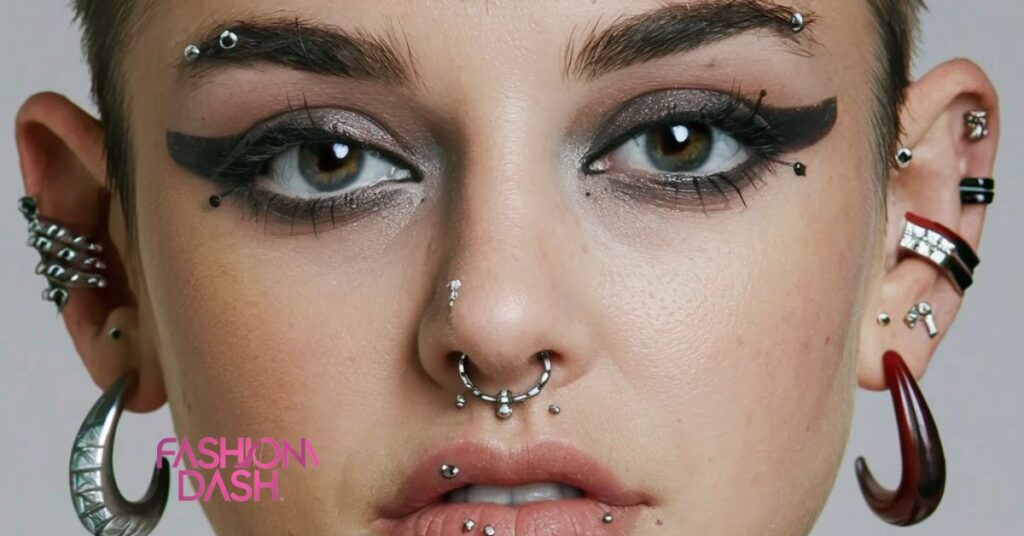
Sure, here are five common types of facial piercings:
Nose Piercing: This is one of the most popular facial piercings. It involves piercing the nostril or the septum (the thin strip of cartilage between the nostrils). Nose piercings can be adorned with studs, rings, or hoops.
Lip Piercing: Lip piercings come in various forms, including the labret (pierced through the center of the lower lip), Monroe, and Medusa (pierced in the center of the upper lip under the nose). Jewelry options include studs, rings, and hoops.
Eyebrow Piercing: This piercing is placed vertically through the eyebrow, typically above the outer edge of the eye. Eyebrow piercings are often adorned with curved barbells or captive bead rings.
Anti-Eyebrow (teardrop): This piercing is placed below the eyebrow.
Cheek Piercing (Dimple Piercing): Cheek piercings involve piercing through the cheek tissue. They are usually done in pairs to create a dimple-like effect. Jewelry options include labret studs or barbells.
Tongue Piercing: Tongue piercings involve piercing the tongue horizontally or vertically
· Nose Piercings
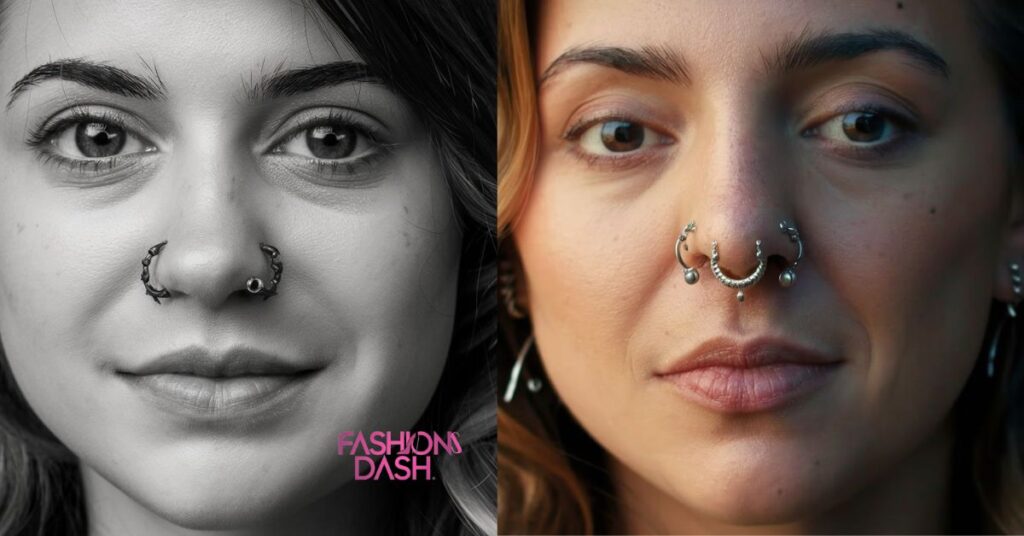
Nose piercing is a form of body piercing where a hole is created in the skin or cartilage of the nose, typically for the insertion of jewelry.
Nostril Piercings: You can typically get one or two nostril piercings on each side of the nose. Some people choose to get matching piercings on both sides, while others prefer a single piercing on one side.
Septum Piercings: The septum is the thin strip of cartilage that separates the nostrils. You can get a single septum piercing, which is placed through the center of the septum. Some people also choose to get multiple septum piercings, known as a “double septum” or “septum stack.”
Bridge Piercings: Bridge piercings are less common and are placed horizontally through the bridge of the nose, between the eyes. You can typically get one bridge piercing, although some people choose to get multiple piercings in this area.
Nasal Tip Piercings: Nasal tip piercings are also less common and are placed through the tip of the nose. You can usually get one nasal tip piercing, although the placement can vary depending on your anatomy.
· Oral Piercings
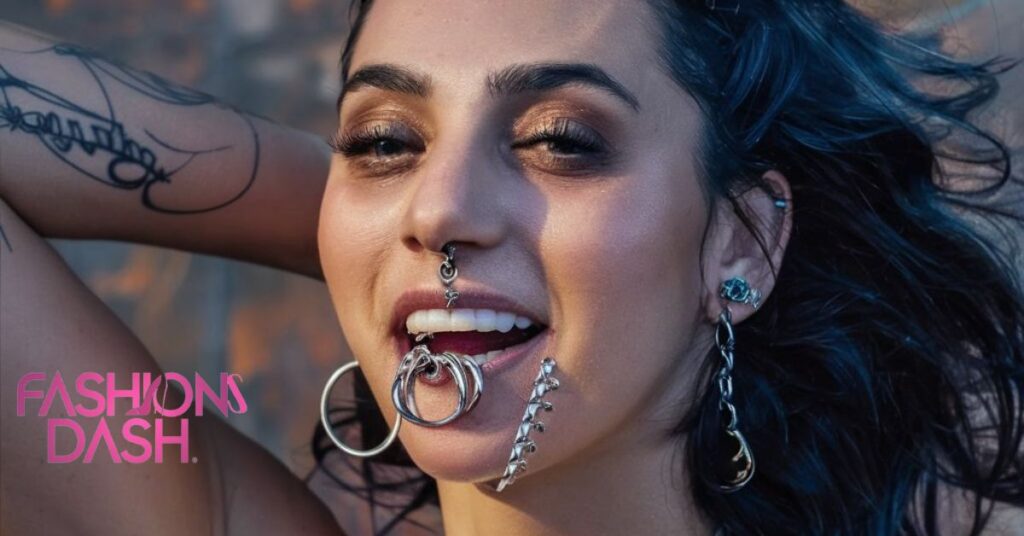
In it involve piercing the tongue, lips, cheeks, or the area around the mouth for the purpose of wearing jewelry it’s a little hard and creepy type of piercing. Here’s a brief overview.
Lip Piercings: Lip piercings can be placed on the upper or lower lip. The most common types are labret piercings (below the lower lip), Monroe piercings (off-center on the upper lip), and Medusa piercings.
Tongue Piercings; Tongue piercings can be placed vertically or horizontally through the tongue. The procedure involves clamping the tongue to stabilize it, piercing through the tongue with a sterile needle, and inserting jewelry. piercing, and it typically takes about 4-6 weeks to heal.
Cheek Piercings: Cheek piercings, also known as dimple piercings, are placed through the cheek tissue. They are usually done in pairs to create a dimple-like effect. The procedure involves cleaning the area, marking the piercing spots, and using a sterile needle to create the holes. Jewelry is then inserted into the piercings.
Gum Piercings: Gum piercings, also known as smiley or frowny piercings, are placed through the thin layer of tissue that connects the upper lip to the gums (smiley) or the lower lip to the gums.
· Lip Piercings
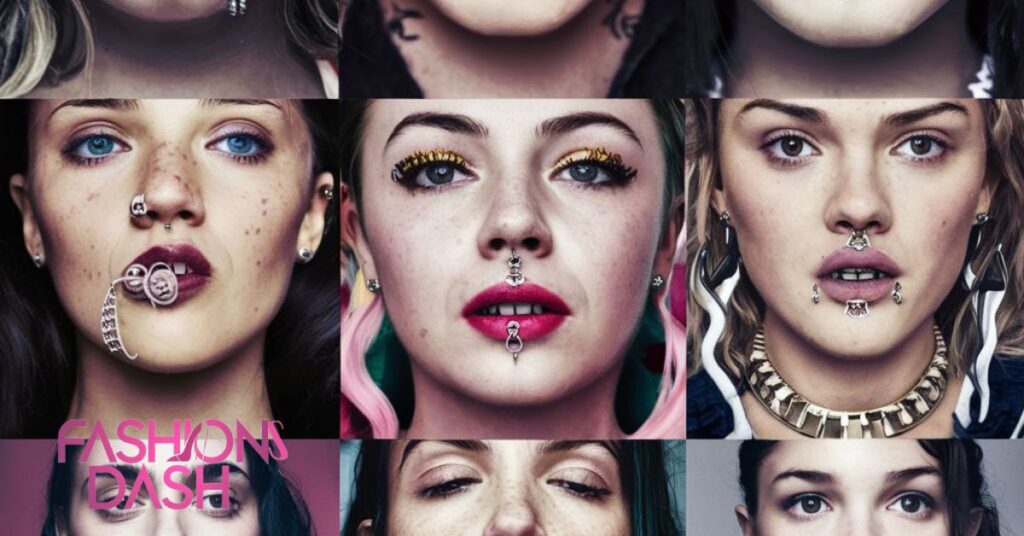
Lip piercings involve piercing the lip to insert jewelry. Here’s a brief overview of lip piercings and their variations:
Types of Lip Piercings:
Labret Piercing: This is a piercing below the lower lip, in the center. It can be done with a stud or a ring.
Madonna/Monroe Piercing: This piercing is located off-center on the upper lip, resembling a beauty mark. It is typically done with a small stud.
Medusa Piercing: Also known as a philtrum piercing, it is placed in the center of the upper lip, just below the septum.
Vertical Labret Piercing: This piercing goes through the center of the lower lip vertically, with one end of the jewelry inside the mouth and the other on the outside.
Dahlia/Bites Piercing: These are paired piercings at the corners of the mouth, resembling dimples.
Angel Bites: These are paired piercings on the upper lip, located on each side of the philtrum.
Snake Bites: Two piercings are done on the lower lip, one on each side, resembling snake bites.
· Surface Piercings
Surface piercings are done on flat surfaces of the body where there is minimal underlying tissue. Unlike traditional piercings that go through a distinct entry and exit point, surface piercings involve creating an entrance point and then following the curve of the skin before exiting. Here’s an overview of surface piercings:
Types of Surface Piercings:
Nape Piercing: This piercing is done on the back of the neck, at the base of the skull.
Chest Piercing: Surface piercings can be done on the chest, usually along the collarbone or between the breasts.
Hip Piercing: These piercings are done on the hip bone or along the pelvic area.
Back Piercing: Surface piercings can be done on the lower back or along the spine.
Wrist Piercing: Surface piercings on the wrist are less common but can be done along the surface of the wrist.
Hand Piercing: Surface piercings can be done on the back of the hand or along the fingers.
Ankle Piercing: These piercings are done along the surface of the ankle.
Collar Piercing: Surface piercings can be done on the collarbone or along the sides of the neck
· Genital Piercing:
Genital piercings are used to adorn the genital areas, and in some cases, increase sexual pleasure. We’ll discuss the male and female genital piercings below.
Male Genital (Penis) Piercings:
Dydoe: A piercing on the head of the penis.
Ampallang: A horizontal piercing through the glans.
Apadravya: A vertical piercing through the glans.
Kuno: A foreskin piercing for uncircumcised men.
Frenum: A horizontal piercing on the underside of the shaft.
Dorsal Frenum: Along the shaft, instead of the underside.
Lorum (Low Frenum): Near the scrotum, at the base of the shaft.
Jacob’s Ladder: Multiple frenum piercings along the shaft.
Hafada: On the scrotum, can be a single piercing or multiple.
Guiche: On the perineum, between the scrotum and anus.
Prince Albert: Through the urethral tube and exits behind the head of the penis (most common).
Reverse Prince Albert: Urethra pierced from the top side of the shaft.
Female Genital (Vagina) Piercings:
Christina (Venus): On the fleshy rise where the labia majora meet.
Clitoris: Vertical or horizontal clitoral hood piercing.
Vertical Clitoral Hood (VCH): Popular, increases sexual stimulation.
Horizontal Clitoral Hood (HCH): Pierced horizontally on the skin covering the clitoris.
Fourchette: Near the perineum, at the vagina’s rear entrance.
Isabella: From the base of the clitoris, up to the clitoral hood.
Labia: Ornamental piercing around the vulva (labia majora/outer or labia minora/inner).
Nefertiti: Vertically from the clitoral hood to the mon pubis.
princess Albertina: Through the urethra and emerges at the vaginal opening.
Triangle: Situated below the clitoral hood and behind the clitoris (depends on anatomy).
· Dermal Piercings
Dermal piercings, also known as microthermal, are unique because they don’t have a separate entry and exit point for the jewelry. Instead, a small hole is created, and an anchor is inserted into the middle layer of the skin (dermis). The base of the anchor secures the post, which is where the jewelry is attached. The jewelry then rests on the surface layer of the skin, giving the appearance of beads on the skin. Here are some types of dermal piercings:
Back Dimple Dermal: Placed on the lower back where the pelvis and spine meet. It can be done as a pair or a single piercing.
Cheekbone Dermal: Located on the cheekbone.
Neck Dermal: Placed on the front or back of the neck, can be single or multiple.
Forearm Dermal: Positioned anywhere on the forearms, can be done as a single piercing or multiple for a pattern.
Dimple Dermal (Cheek Dermal): Placed on the dimple area of the cheeks.
Thigh Dermal: Inserted under the skin of the thigh, can be done as a single or multiple piercings.
Chest Dermal: Positioned between the breasts.
Hand Dermal: Placed on the top side of the hands.
Wrist Dermal: Positioned outside the wrist, just above the fold.
Eye Dermal: Placed at the top of the cheekbones or under the eyes, not inside the eye.
Face Dermal: Can be placed anywhere on the face, popular around the top of the cheekbone.
Hip Dermal: Located around the V-line of the pelvic bone, can be done on both sides.
Third-Eye Dermal: Done on the forehead, between the brows.
Belly Dermal: Alternative to a standard belly button piercing, can be one or two around the belly button.
Collarbone Dermal: Placed near the collarbones.
Finger Dermal: Positioned on the top side of the fingers.
Each type of dermal piercing offers a unique and visually striking look, and placement should be chosen carefully based on personal preference and anatomy. It’s essential to consult with a professional piercer for advice on placement and aftercare.
Different body piercing materials
Body piercing jewelry is crafted from a variety of materials. Below is a compilation of materials suitable for body piercings.
Titanium body jewelry

Titanium is a premium metal with a high grade and is almost nickel-free (contains less than 0.05% nickel). It is extremely durable, resistant to dents and scratches, and an excellent choice for those with metal sensitivities. Available in various colors, titanium jewelry is more expensive but offers exceptional value.
Surgical stainless steel
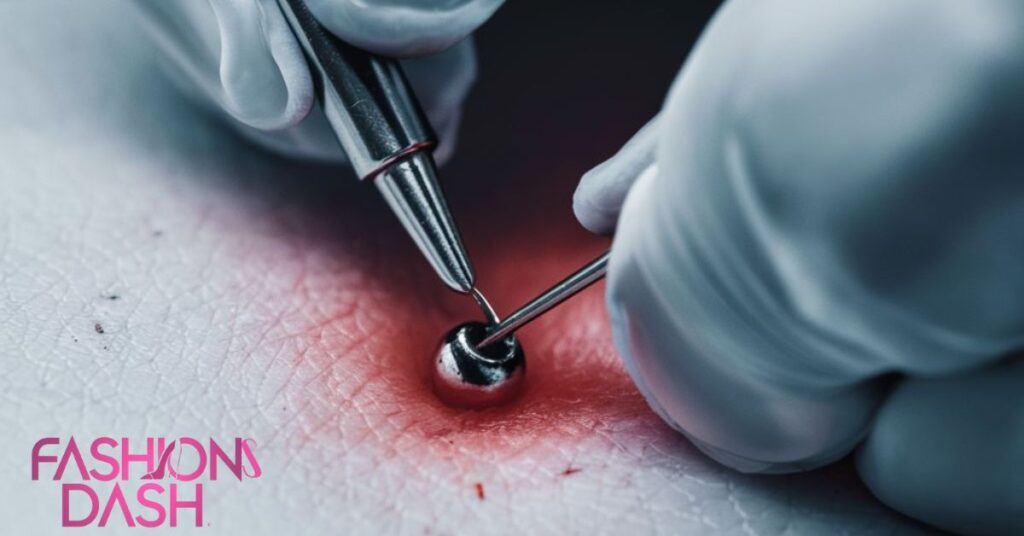
Surgical stainless steel used in body jewelry must meet grades 316L or 316LVM. These grades have a low corrosion rate and are considered safe for body wear. However, they contain a minimal amount of nickel, which may irritate very sensitive skin.
Silicone body jewelry
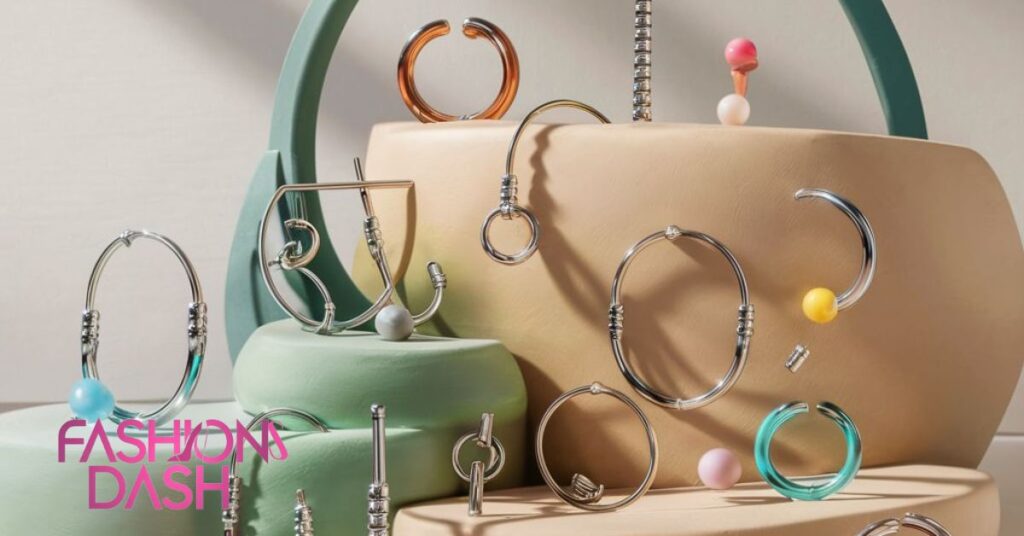
While biocompatible, silicone jewelry has drawbacks. Its ability to stretch can lead to overstretching or tearing of piercings. Additionally, its tight seal with the skin can trap moisture, increasing infection risks. Proper hygiene is essential when using silicone jewelry.
Glass body jewelry
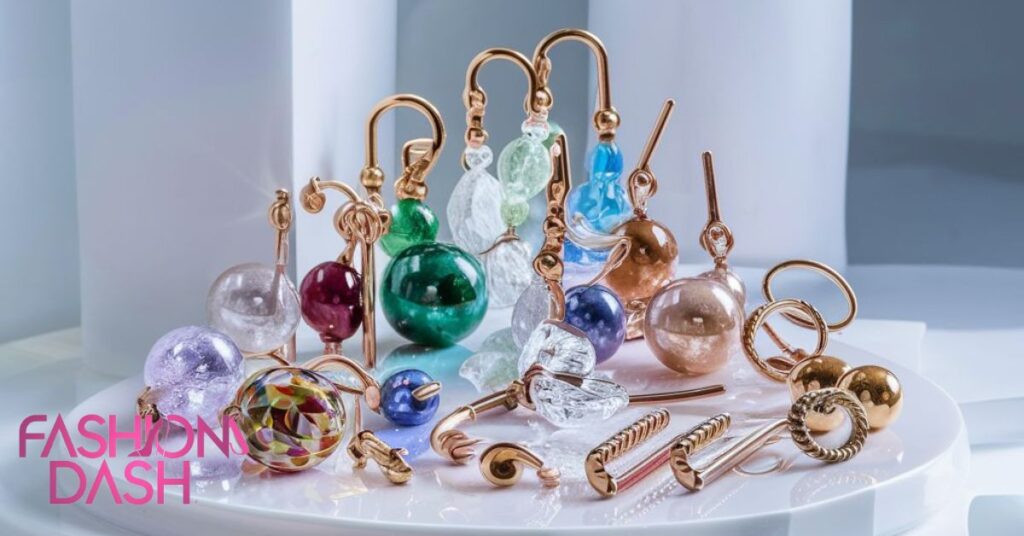
Glass body jewelry, specifically tempered, non-porous, medical-grade, lead-free glass, is biocompatible and non-toxic. However, it is heavy and not suitable for fresh piercings due to the potential for unintended stretching.
Acrylic body jewelry
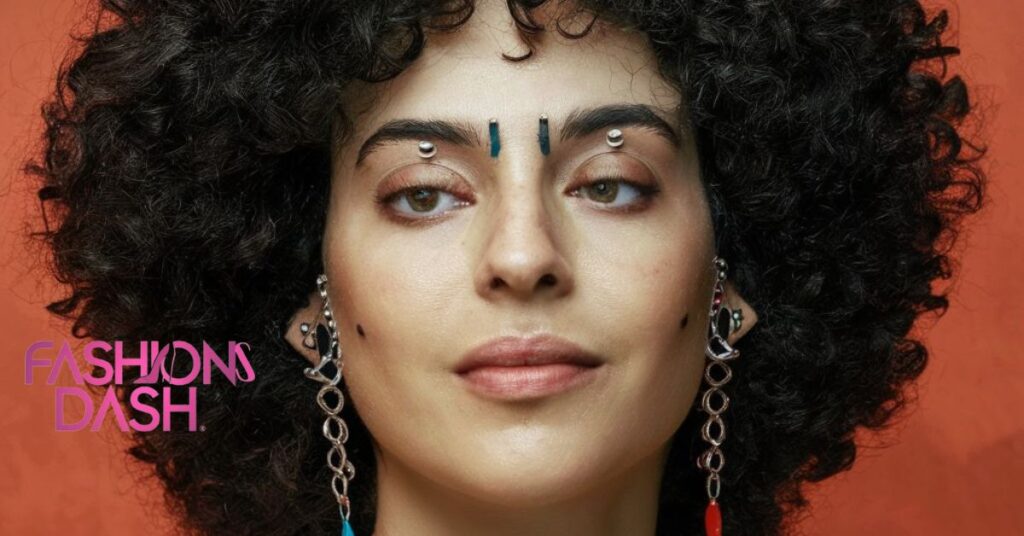
Acrylic jewelry is lightweight, affordable, and available in various colors. However, it is not ideal for long-term wear as it can irritate the skin. Acrylic jewelry is challenging to clean and sterilize, making it less suitable for body piercings.
Gold body jewelry
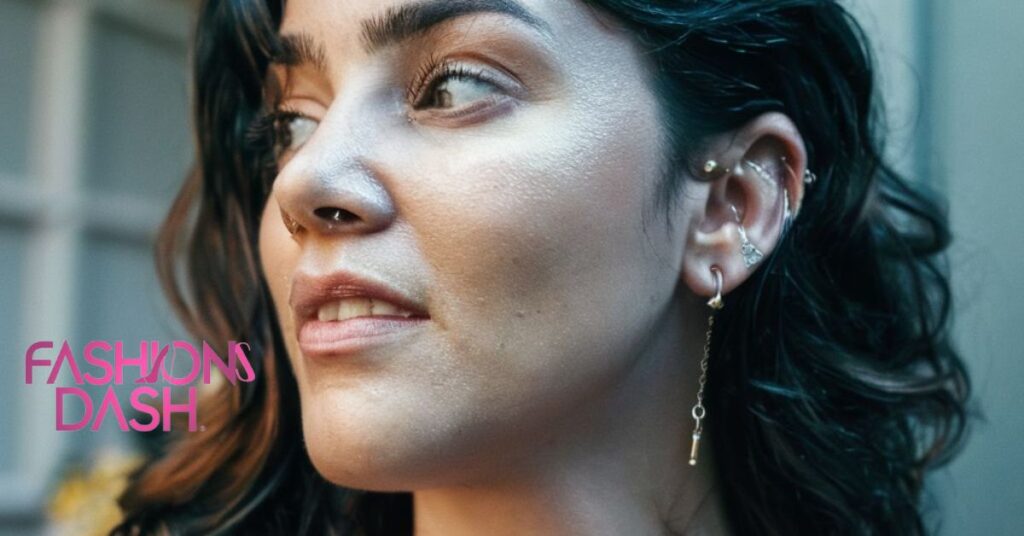
Gold jewelry is suitable for sensitive skin but may contain traces of nickel. Solid gold jewelry is recommended for healed piercings and non-irritated skin. Avoid gold-plated jewelry if you have sensitive skin.
Wood body jewelry

Wood jewelry is versatile and comes in various colors and types. While generally safe for piercings, some types of wood can be harmful to the skin. Wood jewelry is not recommended for new piercings or long-term wear. Proper care, such as cleaning with mild soap and water and avoiding moisture exposure, is essential for wood jewelry maintenance.
Frequently Asked Questions
What is the purpose of body piercings?
Body piercings serve as a form of self-expression and personal adornment.
How do body piercings contribute to fashion?
Body piercings can enhance one’s aesthetic and style, adding a unique flair to their appearance.
Are body piercings purely decorative?
While they can be decorative, body piercings can also hold cultural, spiritual, or symbolic significance for individuals.
Can body piercings enhance sensitivity?
Yes, certain piercings, such as those in the nipples or genitals, can enhance sensitivity and sexual pleasure for some people.
Why do people choose to get body piercings?
People choose to get body piercings for various reasons, including self-expression, cultural traditions, fashion, and symbolism.
Conclusion
body piercing is a way for people to express themselves by decorating their bodies with jewelry. There are many types of piercings, from ear piercings to more unique ones like dermal piercings.
It’s important to choose a good piercer, take care of your piercing afterward, and understand the risks involved. Overall, body piercing can be a fun and personal way to add a little sparkle to your look!

Clara , a fashion blogger with four years of experience, specializes in creating captivating content on fashion trends, styling tips, and beauty hacks, establishing herself as a trusted resource for fashion enthusiasts.

